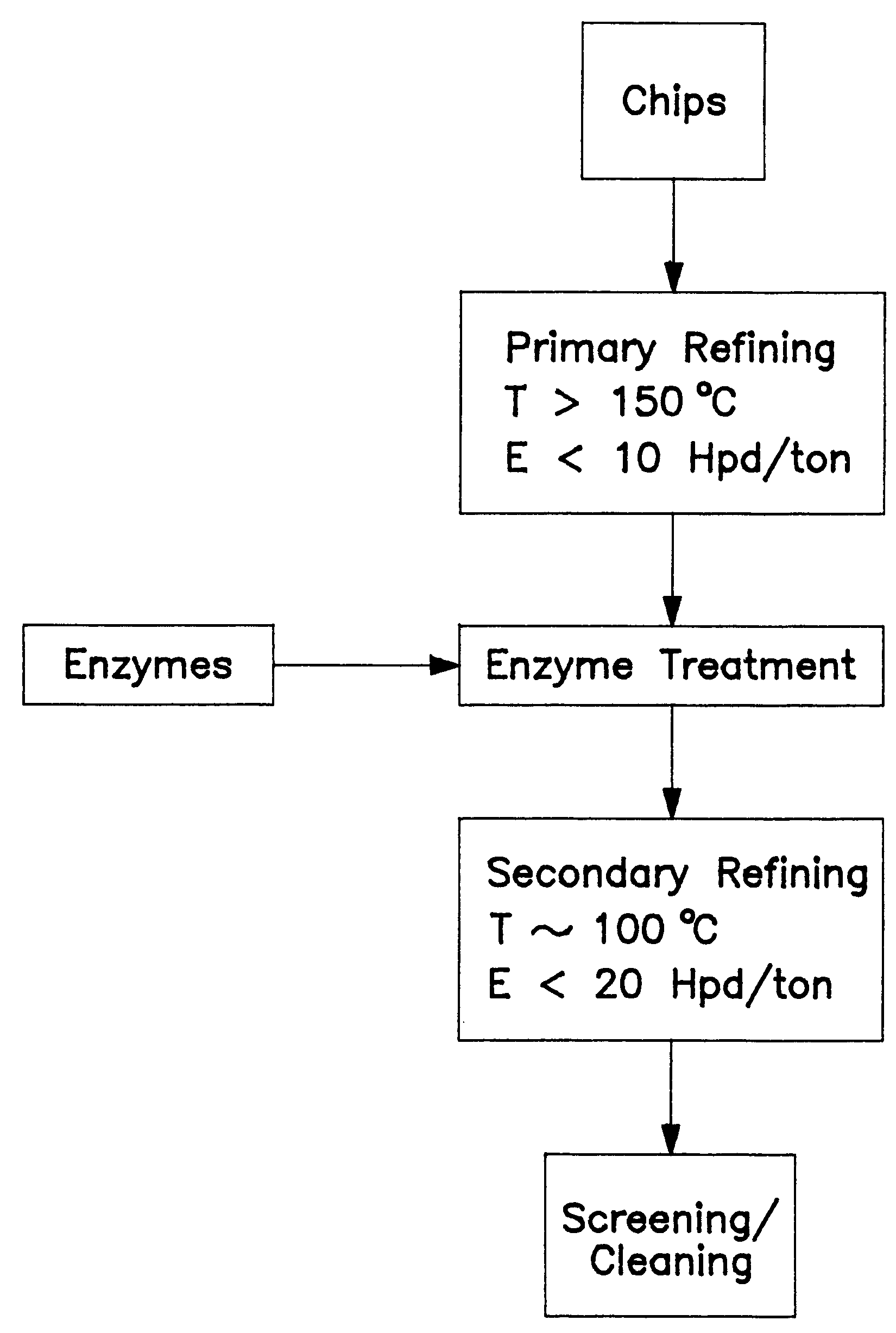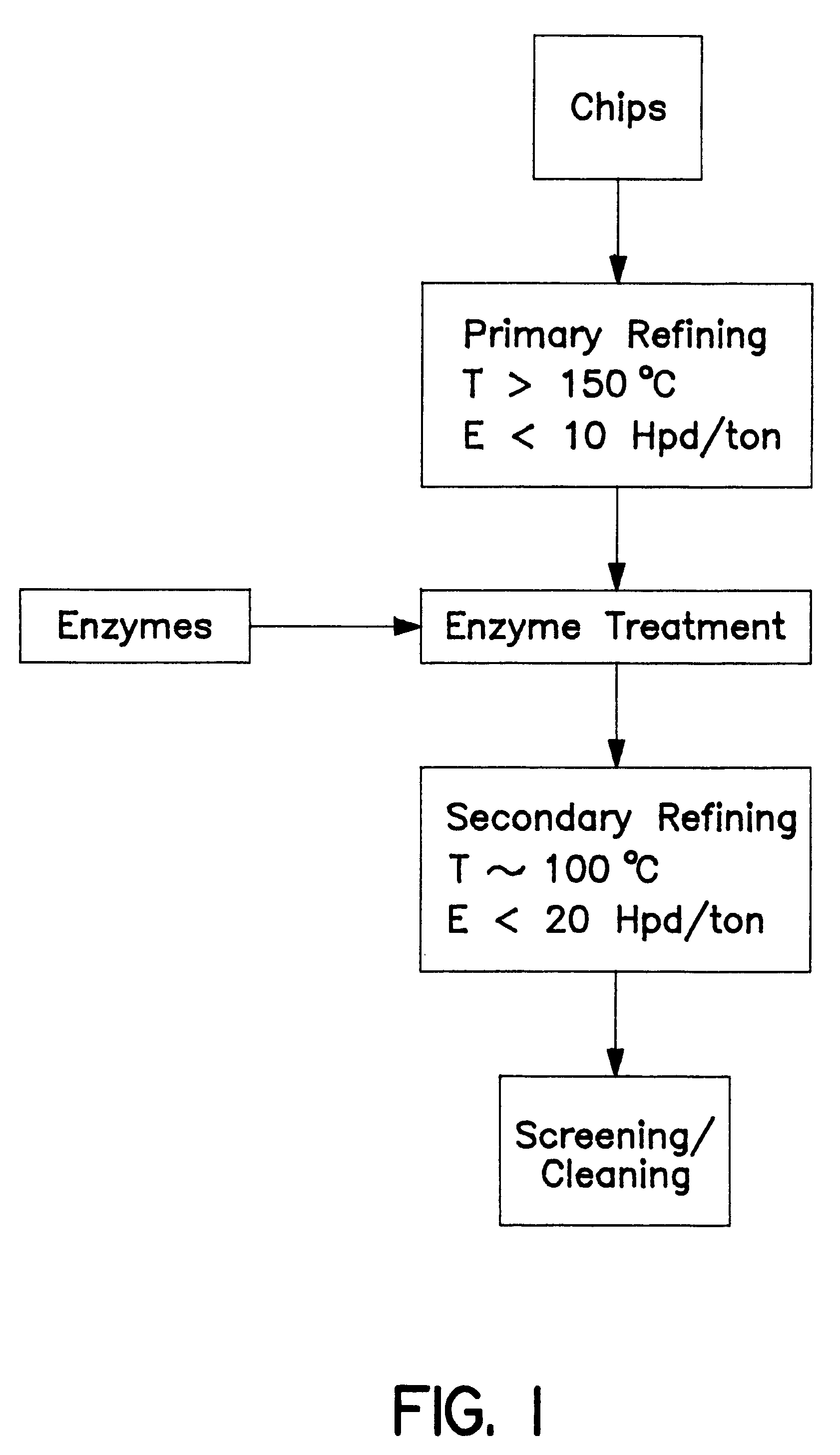Low energy thermomechanical pulping process using an enzyme treatment between refining zones
a thermomechanical pulping and enzyme treatment technology, applied in the multi-stage pulping process, cellulose treatment using microorganisms/enzymes, pulping with inorganic bases, etc., can solve the problems of large energy expenditure, poor strength properties of the resulting product, and substantial reduction of fiber length
- Summary
- Abstract
- Description
- Claims
- Application Information
AI Technical Summary
Problems solved by technology
Method used
Image
Examples
Embodiment Construction
The present invention provides a novel process for producing high yield, high strength thermomechanical pulp with low energy requirements.
In its broadest sense, the method of the present invention comprises a three step process for pulping wood chips, comprising a primary refining step, an enzyme treatment step, and a secondary refining step.
It is further contemplated that the wood chips can be pretreated by means known to those skilled in the art prior to the primary refining step. This includes preheating; steaming; diluting; chemical pretreatments with chemicals such as hydrogen peroxide, sodium sulfite or sodium hydroxide; enzyme pretreatment; fungal pretreatment; and / or mechanical pretreatment for chip destructuring.
The optionally pretreated chips are then fed to a primary refiner, in the presence of dilution water.
Suitable materials from which the wood chips can be derived for use herein include the usual species of coniferous pulp wood such as spruce, hemlock, fir, pine and t...
PUM
| Property | Measurement | Unit |
|---|---|---|
| temperature | aaaaa | aaaaa |
| temperature | aaaaa | aaaaa |
| temperature | aaaaa | aaaaa |
Abstract
Description
Claims
Application Information
 Login to View More
Login to View More - R&D
- Intellectual Property
- Life Sciences
- Materials
- Tech Scout
- Unparalleled Data Quality
- Higher Quality Content
- 60% Fewer Hallucinations
Browse by: Latest US Patents, China's latest patents, Technical Efficacy Thesaurus, Application Domain, Technology Topic, Popular Technical Reports.
© 2025 PatSnap. All rights reserved.Legal|Privacy policy|Modern Slavery Act Transparency Statement|Sitemap|About US| Contact US: help@patsnap.com


